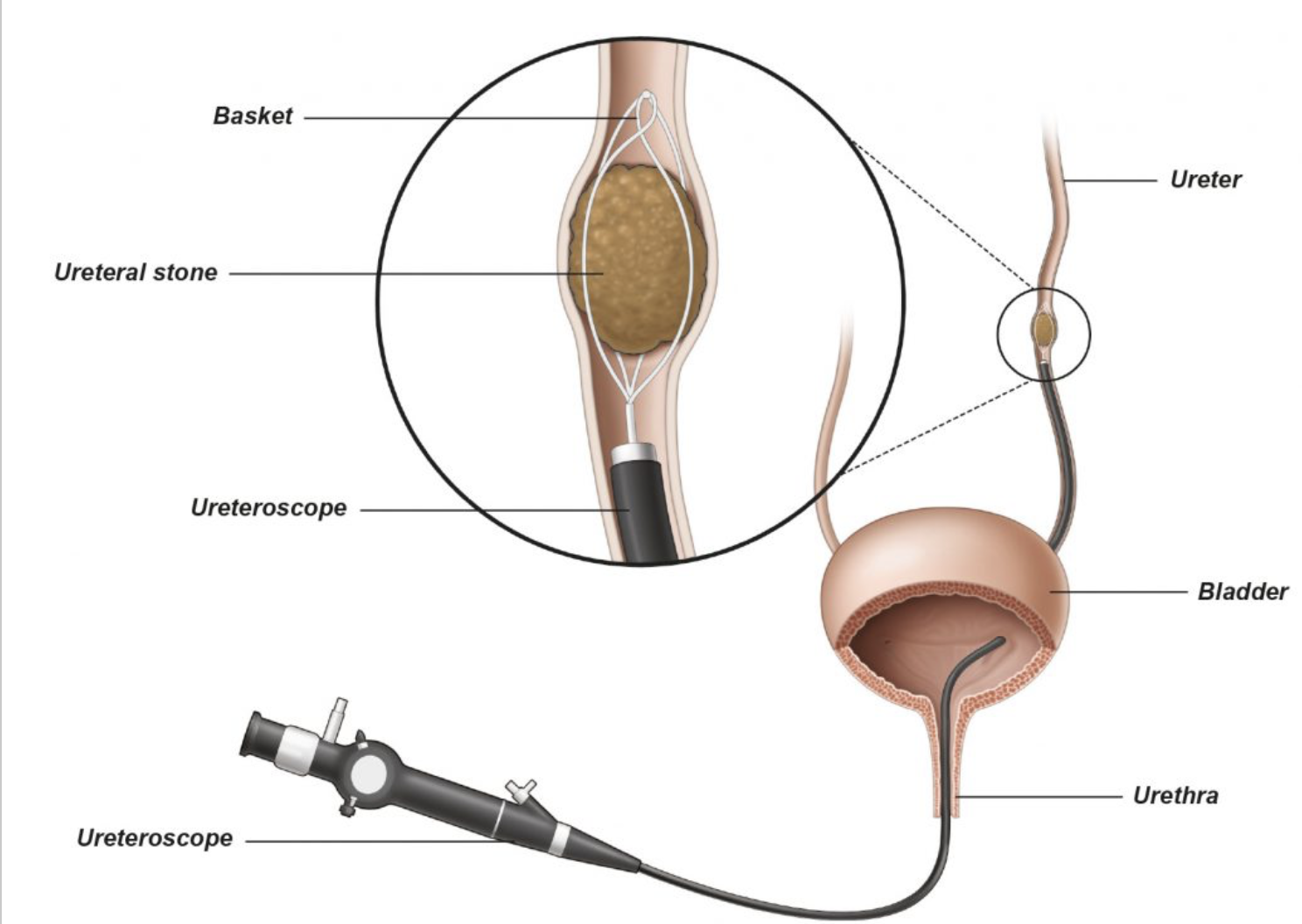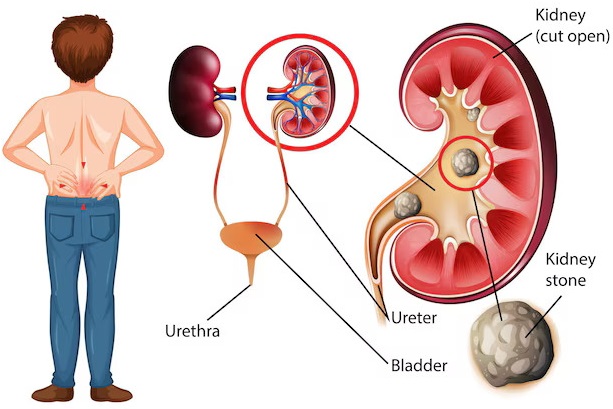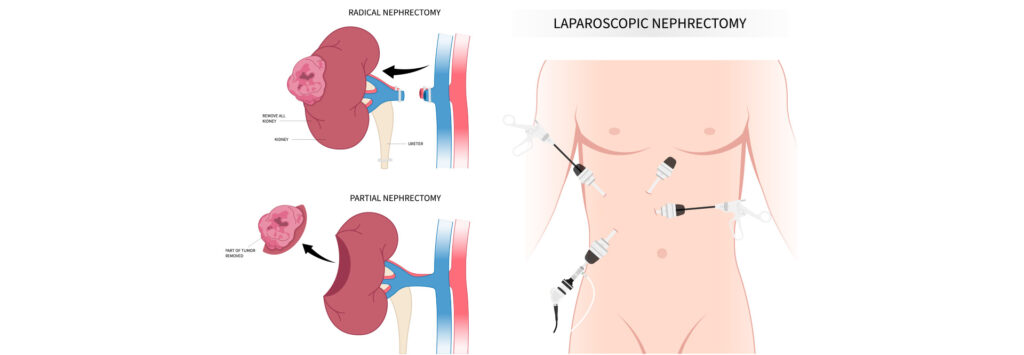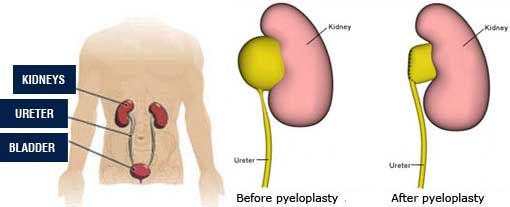Ureteroscopy (URS) is needed when there are issues in the ureters or kidneys, such as:
Kidney or Ureteral Stones: Large stones causing pain or blockage.
Obstructions: Blockages in the ureter due to stones, scarring, or strictures
Tumors: Suspicion of tumors in the urinary tract.
Hematuria: Unexplained blood in the urine.
Strictures: Narrowing of the ureter affecting urine flow.
Chronic or Recurrent Infections: Due to underlying stones or blockages.
Post-Surgical Follow-Up: After stone removal or other treatments.
It’s used to remove stones, clear obstructions, or diagnose and treat urinary tract problems.
Here’s a short step-by-step procedure for Ureteroscopy (URS):
1. Preparation:
Anesthesia: Local or general anesthesia is given.
Fasting: You may be instructed to avoid eating or drinking before the procedure.
IV Line: For fluids or medications.
2. Positioning:
You lie on your back with legs slightly spread.
The area is sterilized.
3. Insertion of Cystoscope:
A thin tube (cystoscope) is inserted through the urethra into the bladder.
4. Insertion of Ureteroscope:
A ureteroscope is inserted through the cystoscope into the ureter and possibly the kidneys for examination.
5. Examination & Diagnosis:
The doctor checks for stones, blockages, tumors, or strictures in the urinary tract.
6. Treatment (if necessary):
Stones are removed or broken up with a laser.
Tumors may be biopsied or removed.
A stent may be placed if needed to keep the ureter open.
7. Completion:
The ureteroscope and instruments are removed.
If a stent was placed, it may remain for a few days to a few weeks.
8. Recovery:
The procedure typically lasts 30-60 minutes.
You can usually go home the same day and resume normal activities in a few days.
Benefits of Ureteroscopy (URS)
Minimally invasive (no cuts)
Effectively removes kidney/ureteral stones
Quick recovery time
Usually done as a day procedure
Accurate diagnosis and treatment
Safe with low complication risk












